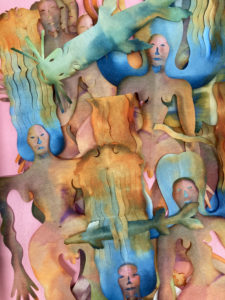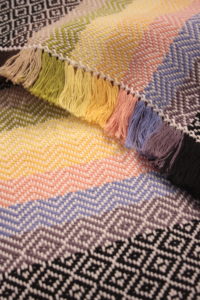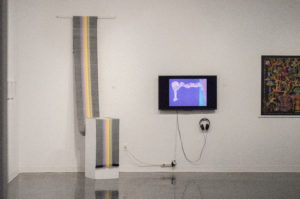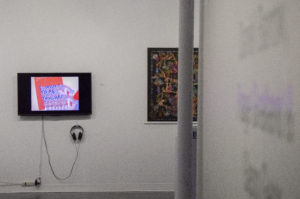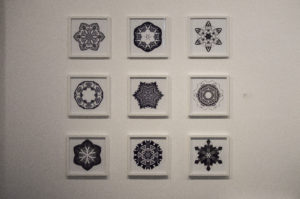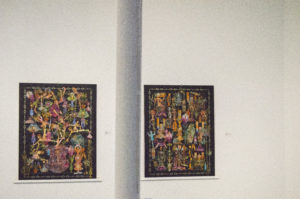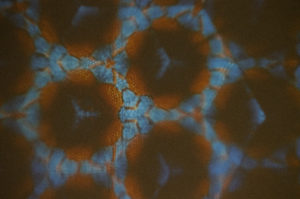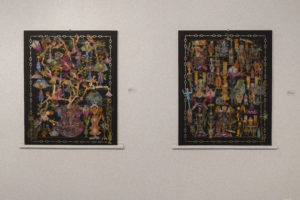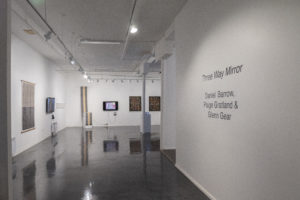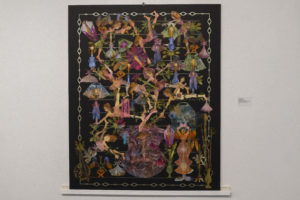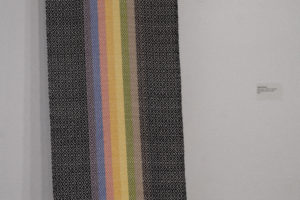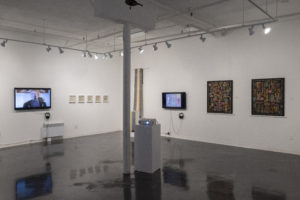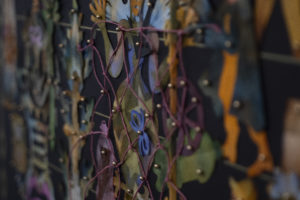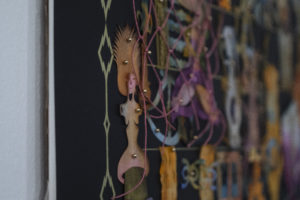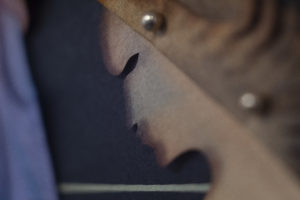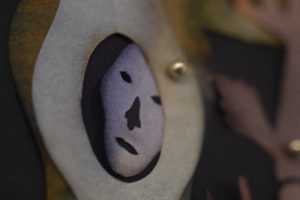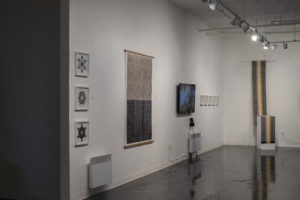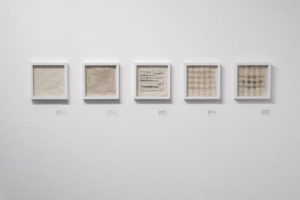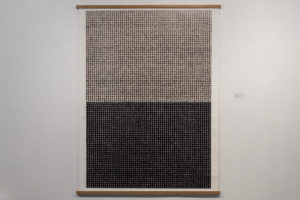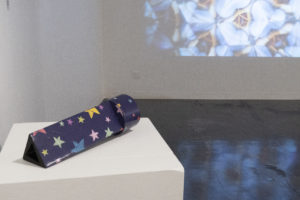Daniel Barrow, Paige Gratland & Glenn Gear: Three Way Mirror
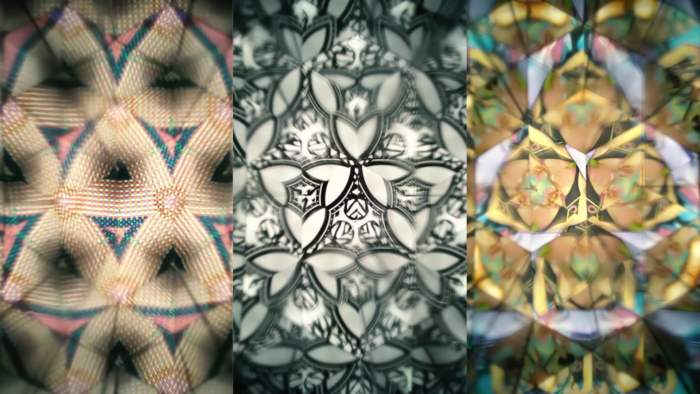
Daniel Barrow (MB), Paige Gratland (BC), and Glenn Gear (NL) all met during the Intergenerational LGBT Residency at Gibraltar Point, Toronto Island last summer. There they spent two weeks working together, exchanging stories, ideas and images, and saw many commonalities within their bodies of work. They each employ narrative from a distinctly queer perspective and also each infuse their love of narrative into object-making. Specifically, they each make videos and objects that employ a decorative charge, revealing little by little an encoded queer content. The videos and the decorative or wearable objects (whether it be cowboy boots, traditional beading, or miniature t-shirts on mannequins) illustrate intimate scenes of contemplation, sexual freedom, phobias or shameful obsessions.
“After working in the community for two weeks this past summer, it seemed obvious that a group exhibition was emerging. We imagined presenting this show in each of our respective home provinces – so that we can each have the opportunity to act as a host for each other and, of course, for the work itself.”
Daniel, Paige, and Glenn recently had a residency at Eastern Edge between July 8 – August 20, 2022. The culminating exhibition, Three Way Mirror, contains work they made during that time.
“Since the pandemic began, we have been thinking of ways we can meaningfully draw from this experience and then translate our art practices in a way that maintains the increasingly important sense of a communal experience. The pandemic and the indefinite closure of physical spaces have radically changed our relationship with culture and cultural consumption. Over the past two years, artists have had few alternatives to digital realms when seeking an audience for our ideas, images and creative anxieties. Gratland, Gear and Barrow worked for six weeks in Newfoundland on their respective forthcoming bodies of work in the fellowship of a queer craft triangle as a way to reconnect to a communal experience and explore the intimacy created when people work creatively together. They experimented with various collaboration models to skillshare their respective decorative craft traditions and explored the material intelligence of each other’s practices. The resulting exhibition, “Three Way Mirror,” seeks to create a synchronistic experience that reflects the shared sensibilities of these three distinct artists and constructs the space for queer craft legacies to be created and shared.”
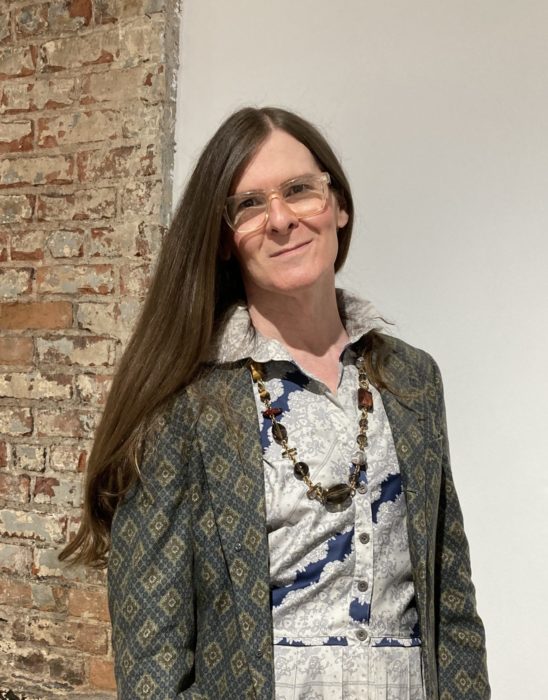
Daniel Barrow is a genderfluid, Montreal-based storyteller/artist who has employed multiple strategies in their approach to the tradition of paper dolls – inventing “paper doll poems”. Over the last fifteen years, they have used simple (often antiquated) technologies to present pictorial narratives by merging the methods of cinema, comics, animation, and magic lantern shows. They are best known for adapting comic book narratives to “manual” forms of animation by manipulating drawings on an overhead projector. They have presented projection performances at international venues including: The Walker Art Center (Minneapolis) The Museum of Contemporary Art (Los Angeles), PS1 (NYC), The Portland Institute for Contemporary Art, and the British Film Institute. They are the winner of the 2010 Sobey Art Award and the 2013 Glenfiddich Artist in Residence Prize.
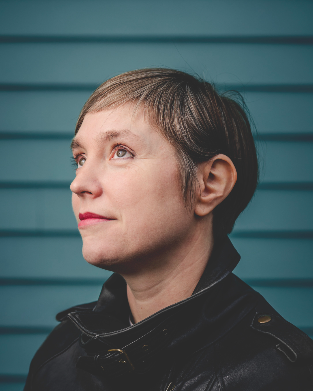
Paige Gratland is a west coast based visual artist and filmmaker working in documentary, craft, print publication and artist multiples. She learned to weave in 2019 at the Richmond Weavers and Spinners Guild and is currently pursuing her Level Two of the Master Weavers Program at Olds College. Her woven work is informed by relational colour theory and explores the link between colour and cultural memory.
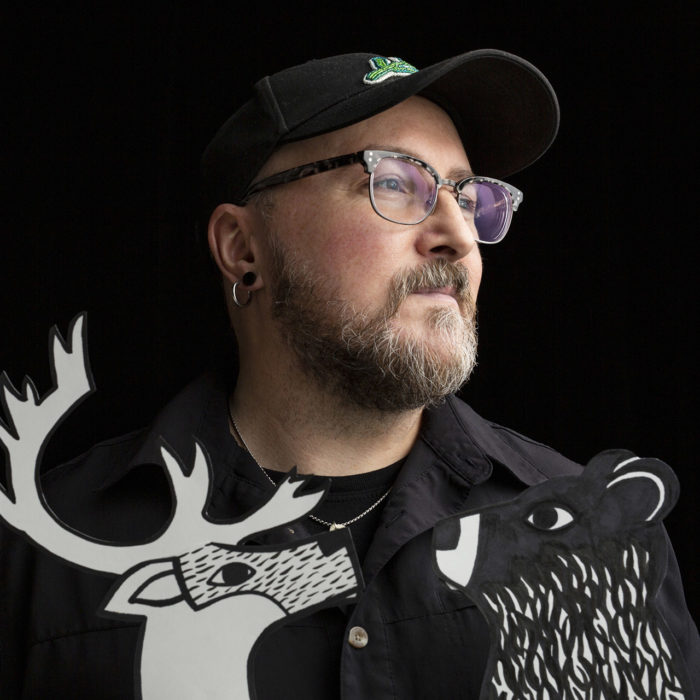
Glenn Gear is an Indigiqueer filmmaker and multidisciplinary artist of Inuit and settler descent. He is originally from Corner Brook, Newfoundland and has family ties to Nunatsiavut. His practice is grounded in a research creation methodology shaped by Inuit and Indigenous ways of knowing, often employing the use of animation, photo archives, painting, beading, and work with traditional materials such as sealskin. His work has shown in exhibitions across Canada and his films have screened in festivals around the world.
Show Documentation
Photo Credit: Ksenia Korniewska
